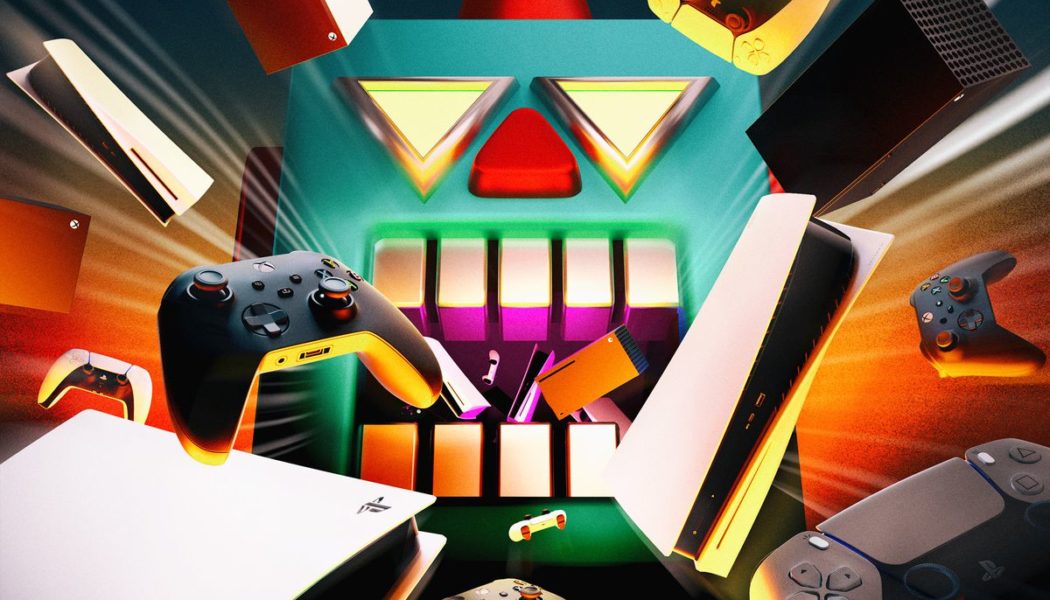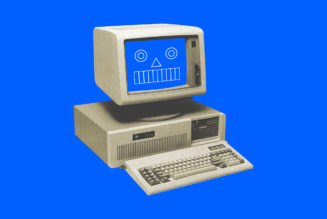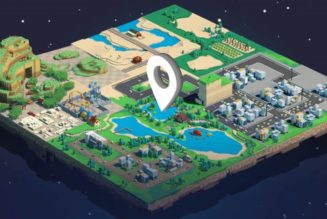On June 15th, 1987, CompuServe introduced the GIF, a way to share images — or animated sequences of images — anywhere. The incredible portability of the late Steve Wilhite’s “graphics interchange format” made it the perfect canvas for viral memes.
Now, a company called Looking Glass is trying to make holograms effortlessly portable, too.
“Imagine we’re in a parallel universe and every movie ever shot was shot in color, but every human being was watching in black and white,” says Looking Glass co-founder and CEO Shawn Frayne. “That’s the situation we’re in with 3D.”
He says that if you add up all the CG movies, video game screenshots, 3D models, and portrait mode photos — and, yes, NFTs — there are hundreds of trillions of pieces of 3D content that we only ever experience in 2D.
That’s why his holographic display company is introducing the Looking Glass Block: a new image format that lets you peek inside a 3D scene, even if you’re viewing it on a normal flat screen. It’s built on web standards so you can view them in any modern web browser, much like a GIF or JPEG.
With Blocks, you simply swipe or mouse over the “image” to get a parallax 3D effect, letting you “see” 3D depth. You can even open up a web browser in a VR headset, then tap an Enter VR button to be transported to a virtual room where you can inspect it in full stereoscopic 3D. It’s like you’re in a mini art gallery.
But the truly remarkable thing about Blocks is you don’t have to take my word for it. We’ve embedded some of them right here in this story. Have you tried swiping around the chocolate bar image yet?
In fact, we’re sharing a piece of original art from Verge illustrator Alex Castro for the very first time in 3D:
You see, my colleague Alex creates a bunch of his work in Blender, generating an entire 3D scene you could fly through like a video game if you wanted. But because we don’t have a good way to share that on the web, he generally has to take a flat 2D picture or maybe an animated GIF of his work.
Here’s the 2D version we published on The Verge, one week ago today:
:no_upscale()/cdn.vox-cdn.com/uploads/chorus_asset/file/23582659/acastro_5127_220519_0001.jpg)
Below, find another version where Looking Glass took a bit of artistic license to create a diorama-like effect, all from the same Blender files.
Look closely as you very slowly drag a mouse or finger across the image. See how it pauses with each step? That’s because every Block is made from as many as 100 slices of a 3D scene, each slice a picture “shot” from a different perspective. That also means your device has to load all of those images by the time you scroll, so it’s not exactly bandwidth-cheap. Frayne says a Block might be 2MB or as much as 50MB if it’s designed for 8K viewing.
In many ways, the technologies on display here are nothing new. Using parallax to create the illusion of 3D on a 2D screen is actually an old technique, one that gets trotted out as a gimmick every decade or so. You could download apps for early smartphones that showed off the idea, and Amazon even tried to sell an entire phone around the concept. (It flopped hard.) Facebook does a parallax 3D trick if you upload portrait mode photos, too.
You can even find such things on the web if you look hard enough. In fact, Frayne says Blocks are built atop hundreds of open web standards — most prominently WebXR. (The company plans to contribute improvements to WebXR but hasn’t done so yet.)
What potentially makes Blocks special, though, is that they live in a container that can scale to any device of any resolution anywhere — and be shared just as easily. Just text someone a link or embed an HTML code block in your website, and they can experience it, too.
Here’s the HTML we used for Alex’s art, for example, which lives in a simple iframe:
<iframe style=”width: 800px; height: 800px;” src=”https://host.glass/embed/?shortcode=947&initial_angle_pct=0.15” frameborder=”0”></iframe>
And here’s a link you could share anywhere on the internet:
https://host.glass/view?shortcode=947
“We really believe this is the missing element,” says Frayne. So, today, the company’s opening a pilot program where 3D creators can sign up to turn their content into Blocks, starting with items created in Blender, Unity, and Unreal. It’ll hit open beta this summer.
For now, 3D-to-Block conversion is a bit of a process. Things like “user-friendly documentation” are still on the roadmap, I understand. The company does have plug-ins for Blender, Unity, and Unreal, but Alex had to submit his work to Looking Glass itself for final mastering, and the company would only do that part of the process off the record.
Over time, Looking Glass says it’ll expand to “C4D, Zbrush, Procreate, nerfies… even iPhone and Android portrait-mode photos.” (I’d never heard of a nerfie before, but they seem pretty cool.) Frayne says the company has even prototyped holographic video content where you could, say, watch a stereoscopic 3D trailer for the next Avatar movie on the Avatar homepage and get multiple perspectives on the action.
In case you hadn’t picked up on it, I’m pretty excited about all of this. But the one thing I can’t figure out, and I’m not sure Looking Glass has figured out, is the business model. Frayne believes the strength of Blocks is in spreading them across the open web, but he’s also clear that Looking Glass will be the one hosting the content — so Blocks are a little bit more like a YouTube embed than a GIF or JPEG that you can host anywhere.
Does that mean we’ll end up watching pre-roll ads, like YouTube, before we can see the holograms? I pressed Frayne on this, and he wouldn’t rule it out — only that he sees his company as a better steward than, say, Meta.
“I think we all know what isn’t fun about the current internet and the pressures that’s created in the world… this is an opportunity to do something different,” he tells me. “If this is as big as we think it’s going to be, the carrier of the transition from flat-land 2D to 3D, it’s our responsibility to try as hard as we possibly can to avoid some of the mistakes that have happened in prior transitions.”
But Looking Glass is planning for this to be a business and not just a way to sell more of its holographic displays, of which there are now roughly 20,000 in the world. “There will of course be some elements of this that are paid,” says Frayne, adding that he’s hoping to have conversations with creators during the pilot program about how monetization might work. (The NFT community seems particularly poised to embrace something like Blocks.)
For those who do have an actual Looking Glass display — it’s a product we’ve been following for years, watching as it morphed from a large box to an open prism to more of a box again and, most recently, a small vertical display designed to let you see your portrait mode smartphone photos in 3D — Frayne suggests his holographic displays will be the best way to view Blocks for some time to come. But while he isn’t selling those displays at a loss, he admits his 50-person company isn’t yet profitable, and he believes holographic software could become a second “flywheel” to grow the business.
“Our hardware is the best way to view holograms, our software is the best way to share holograms.” That’s the idea, anyhow.
We’ll just have to see whether Blocks catch on and whether social media platforms embrace or reject them — possibly in favor of trying to create their own.









